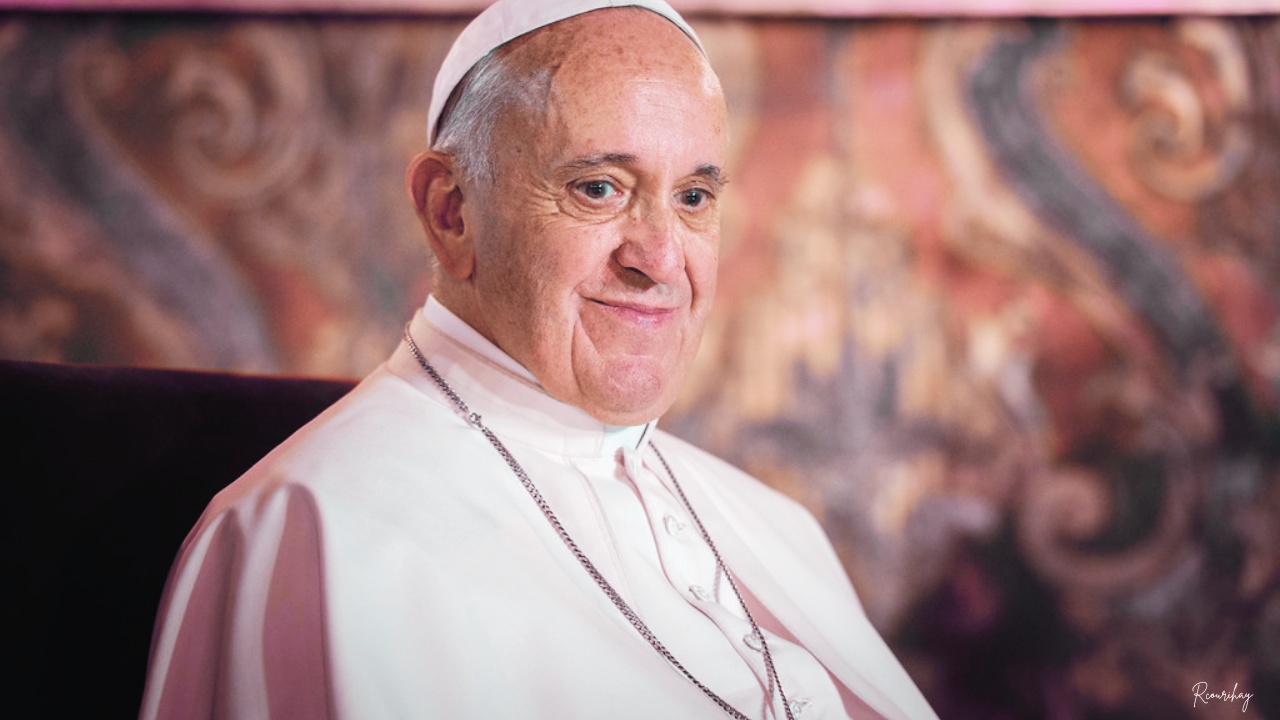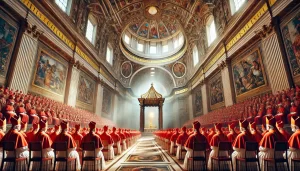
The passing of Pope Francis marks a pivotal moment for the Roman Catholic Church. With over 1.3 billion followers worldwide, all eyes now turn to the Vatican, where 138 cardinals will soon gather behind the locked doors of the Sistine Chapel to elect the next pope.
This centuries-old ritual, called a conclave (Latin for “locked room”), will shape the Church’s direction for decades. Here’s a breakdown of how the process works—and why this conclave is unlike any before.
The Basics: What Is a Papal Conclave?
The conclave is the secretive voting process used to select a new pope. It’s held inside the Sistine Chapel, beneath Michelangelo’s famed frescoes. To ensure privacy, electronic jamming devices block all outside communication. Once voting starts, the chapel is sealed with the traditional Latin command: Extra Omnes—’ Everyone Out.”

Only cardinals under the age of 80 can vote. As of now, 138 of the 252 cardinals in the College of Cardinals are eligible.
| Total Cardinals | Eligible to Vote | Age Limit |
|---|---|---|
| 252 | 138 | Under 80 |
A More Diverse Electorate Than Ever
Historically, the conclave was dominated by Europeans, especially Italians. That’s changing. Today’s College of Cardinals reflects the global nature of the Church, with members from more than 90 countries. Nearly 80% were appointed by Pope Francis himself, who prioritized diversity and inclusion.
This means the upcoming election may be influenced by a broader set of perspectives than ever before. The Church is facing modern challenges—sexual abuse scandals, declining attendance in the West, and growth in the Global South. The next pope will need to address them all.
Learn more about the role of the College of Cardinals.
The Timeline: What Happens and When?
Before voting begins, the cardinals will hold general congregations. These meetings are a chance to discuss the state of the Church and identify what qualities the next pope should have. It’s also a time for cardinals who don’t know each other to connect.
While politicking is expected, blatant self-promotion is frowned upon—and illegal if it involves exchanging favors. The Church forbids “simony,” or buying votes.
Expected Timeline:
| Event | Timing |
| Papal funeral | Day 1 |
| General congregations begin | Within a few days |
| Conclave begins | 15–20 days after the funeral |
Inside the Vote: How a Pope Is Elected
The process is precise. Cardinals vote in silence, each writing a name on a paper ballot. They then approach an urn and drop their ballot while swearing before God that their vote is sincere.
Nine cardinals, selected at random, oversee the election. Three act as scrutineers to count and read aloud each vote.
To be elected, a candidate must receive a two-thirds majority. If that doesn’t happen, the process continues—usually with up to four votes per day. Ballots are burned after each round. Black smoke signals no decision; white smoke means a new pope has been chosen.
| Key Figures in 2025 Conclave |
| Cardinal Pietro Parolin (leading) |
| 138 Voting Cardinals |
| 2/3 Majority Required |
If no consensus is reached after 13 days, the rules allow for a day of prayer. After that, the top two candidates face off until one reaches the required majority.
The ‘Room of Tears’ and the First Blessing
Once a candidate secures enough votes and accepts the election by saying “Accepto,” he officially becomes the pope.
He’s then led to a chamber called the “Room of Tears.” Here, he puts on the papal vestments and takes a moment to absorb the weight of his new role, often an emotional experience.
The new pope chooses a name, usually symbolizing the values or direction he intends to emphasize. Pope Francis chose his name to honor St. Francis of Assisi, known for humility and compassion.
Soon after, the pope steps onto the balcony of St. Peter’s Basilica to deliver his first public message and blessing.
Why This Conclave Matters
The Church is at a crossroads. With the world rapidly evolving, the next pope will need to balance tradition with the demands of modern society. He’ll face pressure to address:
- Clergy sexual abuse accountability
- LGBTQ+ inclusion
- The role of women in the Church
- Climate change and social justice
This conclave won’t just select a new leader—it will define the Catholic Church’s path forward.
For updates and in-depth analysis on global faith and cultural events, follow R. Couri Hay Creative PR.

